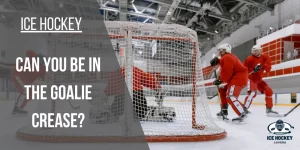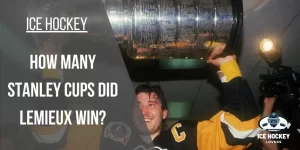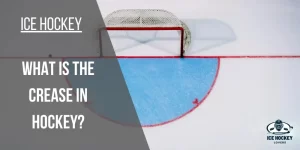What are Coach’s Challenges in the NHL?

In ice hockey, the game runs at high velocity, so naturally, the referee misses calls many times. Due to this, the NHL introduced a coach’s challenge rule to the game. A coach can use a challenge rule if the referee has missed the call.
A coach can challenge the call when he thinks a goal is scored as a result of an offside play and a call has been missed by the referee that could result in a game stoppage or can challenge a goal or no goal depending on the goalie interference call. Then NHL officials will do a video review to verify whether the goal is OK. The team will get a minor penalty if the coach is wrong.
There is the quote that “change is the only constant,” and this perfectly fits when it comes to the coach challenging rules because the way NHL handles this rule constantly updates and tweaks it. Lets’ take a look at the latest one from the 2021-22 season.
Table of Contents
Evolution of coach’s challenge rules
Back in the 2015-16 season, the NHL brought the coach challenges rules based on two conditions:
- Goalkeeper interference
- Offside challenges
If a goal has been scored.
At that time, it felt necessary that some goals be video reviewed to confirm that the scored goals were legitimate, to avoid controversies when many say that a goal should not be counted.
That’s why the NHL goes deep into the water and gives access not only to the referee but to the coach to do a video review only in limited situations. At that time, the consequence of a failed challenge would cost a team to lose a timeout. They cannot call a challenge if the team does not have a timeout.
Now, the NHL has updated the rule by adding the missed calls along with the two conditions mentioned above and changed the consequence from timeout to a 2-minute minor penalty if the challenge is invalid. Also, coaches now have an unlimited number of challenges.
Earlier, when the rule was new, it faced backlash, too, because the rule had the potential to cancel a goal and change the game dramatically.
Goalie interference challenge
A coach can challenge the call when he believes that the goalie interfered in scoring a goal or when he thinks that a confirmed goal is refrained because of goaltender involvement.
When a player is near the goaltender, many suspicions can occur about the scene, and it’s unclear whether a player touched the goalie. If yes, then either the action is deliberate or accidental. Due to its many variations, it’s hard to figure out whether the coaches, players, and analysts, whether the referee will announce a goal or not.
Hence, goalie interference is the commonly used reason to use a coach challenge. Still, sometimes it lies far away from clarification of how the referee will call a goal no matter how many times they watched a video.
That’s why the coach relies on what his eyes see and is in contact with the video coach to have the goal’s validity. Although, they have only 30 seconds to process this.
Offside challenges
A coach can challenge a goal if he thinks that a goal is scored due to an offside play. Remember that the only goal will be checked in at the entry past the blue track forwarding that goal. Other than this entry, all entries before this point during the shift will be omitted from a video review.
Simply, a coach is not allowed to challenge the offside that occurred a minute before the goal in which the puck at least goes up and down onto the ice three times.
Hockey is more like a fighter jet speed game, so there lies the potential that a goal can be scored after that. But how will you see this play get determined to challenge?
The only point coaches try to examine when challenging an offside potential missed call is that they are only an inch fraction of an offside. And a team of officials will be there looking on their iPad, checking if it was an offside play. Then will signal the coach to challenge the play.
A team for the verification of offside play to challenge is necessary because coaches need to ensure that the challenge is correct; otherwise, the team will get a 2-minute minor penalty. And if this happens more than once, there will be an addition of penalty time, which means a total of 4-minutes penalties.
Before the update of this rule, the team feels not have many regrets about losing a timeout to challenge the play. Therefore, NHL updates this rule changing it to a minor penalty to limit the challenges and more goal-scoring on the board.
- 2021 offside rule updations
The NHL updated the offside rule, noticing that lots of goals were taken away because a player lifted their skates a second earlier in an attempt that did not affect the goal, if it scored or not. Hence, the NHL has assured that the skate must be onto the ice or above the blue line allowing a player to stand onside.
This rule would increase the number of goals on board, thus reducing the coach’s challenges.
Missed calls can be the reason for a play stoppage
The new reason that has been added to call the challenge is the missed call that might result in a play stoppage if a goal has been scored.
Like in cases where the puck hits the net via glass or the offensive team does a hand pass to score a goal, and then the puck comes back in the play, and officials carry on the game (when they should be whistled down the game immediately). Then the coach is allowed to challenge the resulting goal.
But the challenge cannot be called and reviewable if it happens in the opposing team’s neutral or defensive zone. This happened in the 2018-19 playoffs, where the San Jose Shark won the game because of a hand pass in the overtime of the Conference Finals.
But all thanks to the NHL, the Blues won the series in the end, or else, one can imagine the protest in St. Louis in case that goal gave them a chance in the Stanley Cup. If a coach challenge was there, then play instantly could have been called back.
How many coach’s challenges do they have?
They have had countless coach challenges since the 2019-20 season, but can they challenge every goal? Yes, why not? It is worth a shot! However, there is a catch in this unlimited number of challenges I mentioned earlier; if the challenge goes wrong, the team will receive a 2-minute minor penalty. And further subsequent wrong challenges will be added to the previous minor penalty time. This means the 2-minute penalty will become a 4-minute penalty.
Before this new change (in the 2015-16 season), the team had to use its timeout to call a challenge, and if it became wrong, the team would lose a timeout.
So, the coach should call a challenge when there is some authenticity. If not, then they have to pay the price. Imagine 5 minutes left in a game to end, and the coach challenges a call while they have already proved wrong before, and they fail the challenge again, then the team would be shorthanded for the 4 minutes. This can become a key point between losing and winning a game.
The success rate of coach challenges
Look at the list below, and you will notice that coaches did well in offside challenge calls compared to goalie interference calls challenges. This is not something to be surprised about because it is clear whether you are on the offside.
On the other hand, goaltender interference is pretty subjective as there are lots of interpretations involved in it. So. The referee will only call it when there is authentic evidence to overturn the goal.
The stats of the NHL 2021-22 season of how well the coaches have done are given below.
- Total: 70 – 24 upheld, 46 overturned (66%)
| Upheld | Overturned | % | |
| Goalie Interference | 12 | 12 | 50% |
| Offside Challenges | 42 – 9 | 33 | 79% |
| Play Stoppage | 4 – 3 | 1 | 25% |
- Goals Lost Due to Challenge
- 5 – CBJ
- 3 – CHI, COL, NYR
- 2 – FLA, CAR, BOS, NYI, SJS, NSH, STL, WSH, WPG
- 1 – DET, BUF, DAL, MIN, NJD, LAK, EDM, VAN, TBL, SEA, OTT, MTL
- 0 – CGY, ANA, ARI, TOR, VGK, PHI, PIT
- Goals Earned Due to Challenge
- (Initially, the goal was waived off due to goalkeeper interference but later overturned.)
- 1 – EDM, OTT
Frequently Asked Questions
Is there a limit on the number of coach challenges?
No, there is no limit on the number of coach challenges. A team can challenge countless times. Coaches are allowed to discourse the referee’s decision within a specific time. However, a team can lose its timeout if the challenge call turns wrong.
What happens if a team loses the challenge?
A team has to face the consequences of the wrong challenges. Upon losing the first challenge, the team is charged with a minor penalty, and a player sits in the penalty box to serve a 2-minute minor penalty. Any subsequent failed attempt will result in a double minor for the delay of the game.
Conclusion
Coach challenges rules are introduced to maintain the play’s fair balance. Because it is so frustrating to see a goal scored when it should not be, and the referee missed it. Everyone would bash the officials for not putting adequate rules to avoid controversies and troubles.
Henceforth, the NHL presented these rules, allowing coaches with the referees to do the video review of missed calls if the game can be overturned. But coaches must use these challenges only when they have sufficient clues to make their challenges successful.
Because it can get into their opposite, causing their team a 2-minute minor penalty which can affect their game-winning probability in case there are subsequently failed challenges too.
Related Articles:

Who is Austin Taylor?
Meet Austin Taylor, your go-to source for everything ice hockey! With a passion for the sport that’s as deep as the ice itself, Austin Taylor brings you concise, expert insights and nitty-gritty details on all things hockey. From gear reviews to strategy breakdowns, Austin Taylor is your trusted guide to navigating the exhilarating world of ice hockey. Get ready to lace up your skates and dive into the game with Austin Taylor as your ultimate companion.



